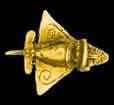A comet blazing toward Earth could outshine the full moon when it passes by at the end of next year - if it survives its close encounter with the sun.
The recently discovered object, known as comet ISON, is due to fly within 1.2 million miles (1.9 million km) from the center of the sun on November 28, 2013 said astronomer Donald Yeomans, head of NASA's Near Earth Object Program at the Jet Propulsion Laboratory in Pasadena, Calif.
As the comet approaches, heat from the sun will vaporize ices in its body, creating what could be a spectacular tail that is visible in Earth's night sky without telescopes or even binoculars from about October 2013 through January 2014...




 Reply With Quote
Reply With Quote




